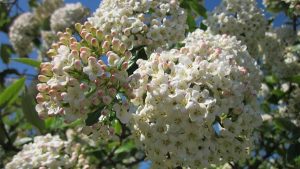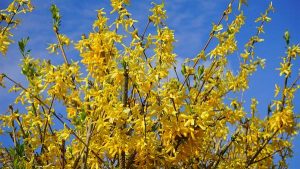Will My Hydrangeas Bloom?
At Connecticut Green, one of the most common questions we hear is, “will my hydrangeas bloom this year?” Hydrangeas are a favorite in our area because they tend to be resistant to pests and diseases. They’re also beautiful and can yield so many flowers in a gorgeous palette of colors. That said, they do stir up a lot of uncertainty among homeowners!
There are many different hydrangea species, and some will be more successful in certain conditions than others. Different varieties bloom in different ways, either on old stems (or “old wood”) or new stems (“new wood”). The most common hydrangea, the Bigleaf, grows blue or pink flowers on older stems, rather than fresh growth. That means that after a very late frost, it’s not likely to bloom. Other varieties sprout their blooms off new growth, so they may do better after a harsh winter season. Hydrangea Paniculata is the most common variety that blooms on new wood, and more likely to flower. The very popular Endless Summer hydrangeas bloom on both old and new wood, allowing them to flower more frequently than other varieties.
With all that said, there are two primary reasons hydrangeas won’t bloom in a given year – even if they’ve delivered beautiful, lush blooms in years past:
- If there was a late spring freeze, even the hardiest hydrangeas may not flower. There are some hydrangeas that can sustain a late freeze, but generally, if new growth is exposed sub-zero temperatures, it cuts your odds of seeing flowers that season. If you haven’t seen blooms for the last two or three years, this is probably why!
- If your Bigleaf hydrangeas were poorly pruned, they’re not likely to flower this year. Note that hydrangeas don’t generally require pruning! Deadheading is always recommended for all varieties, but if you have a Bigleaf or other “old wood” hydrangea, don’t do anything until it’s clear that all your buds have finished. This will probably be around April, and at that point, you can cut stalks down to the first live bud. Cut all the dead stalks down, and deadhead any of last year’s blooms. With new wood hydrangeas – for example, white paniculata varieties like Quickfire, Limelight or Tardiva – you can cut as much as you like in the fall or very early spring.
Now that you know the main factors that can keep hydrangeas from blooming, here are some tips to ensure you get the best blooms possible:
Watering: Hydrangeas like damp soil, so water them when the ground feels dry. In these hot summer days, it’s best to water early in the morning or as the sun sets to ensure the water has soaked in before the heat really hits. Be sure not to overwater – but, feel free to water a second time if it’s really hot and your flowers are wilting!
Fertilizing: Hydrangeas don’t need as much support as other shrubs, and we generally recommend a phosphorus-rich treatment to encourage blooms. In fact, our Liquid Soil Drench contains all the nutrients your hydrangeas need.
Worried about your hydrangeas? Feel free to contact us – we’re happy to help you make the most of your them. We can figure out which type of hydrangea you have, diagnose any problems, and do everything we can to ensure they have the best odds of blooming for the years ahead.





